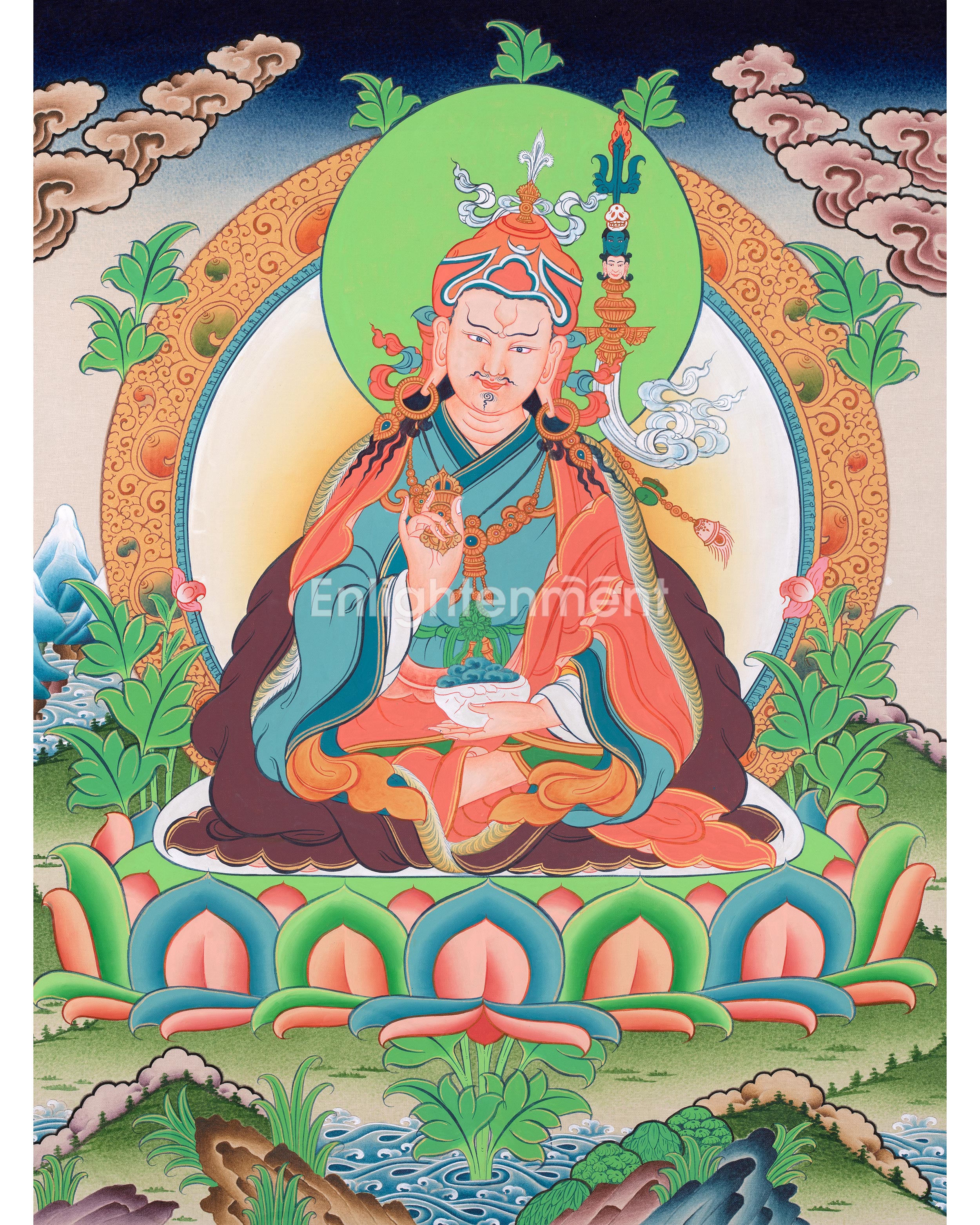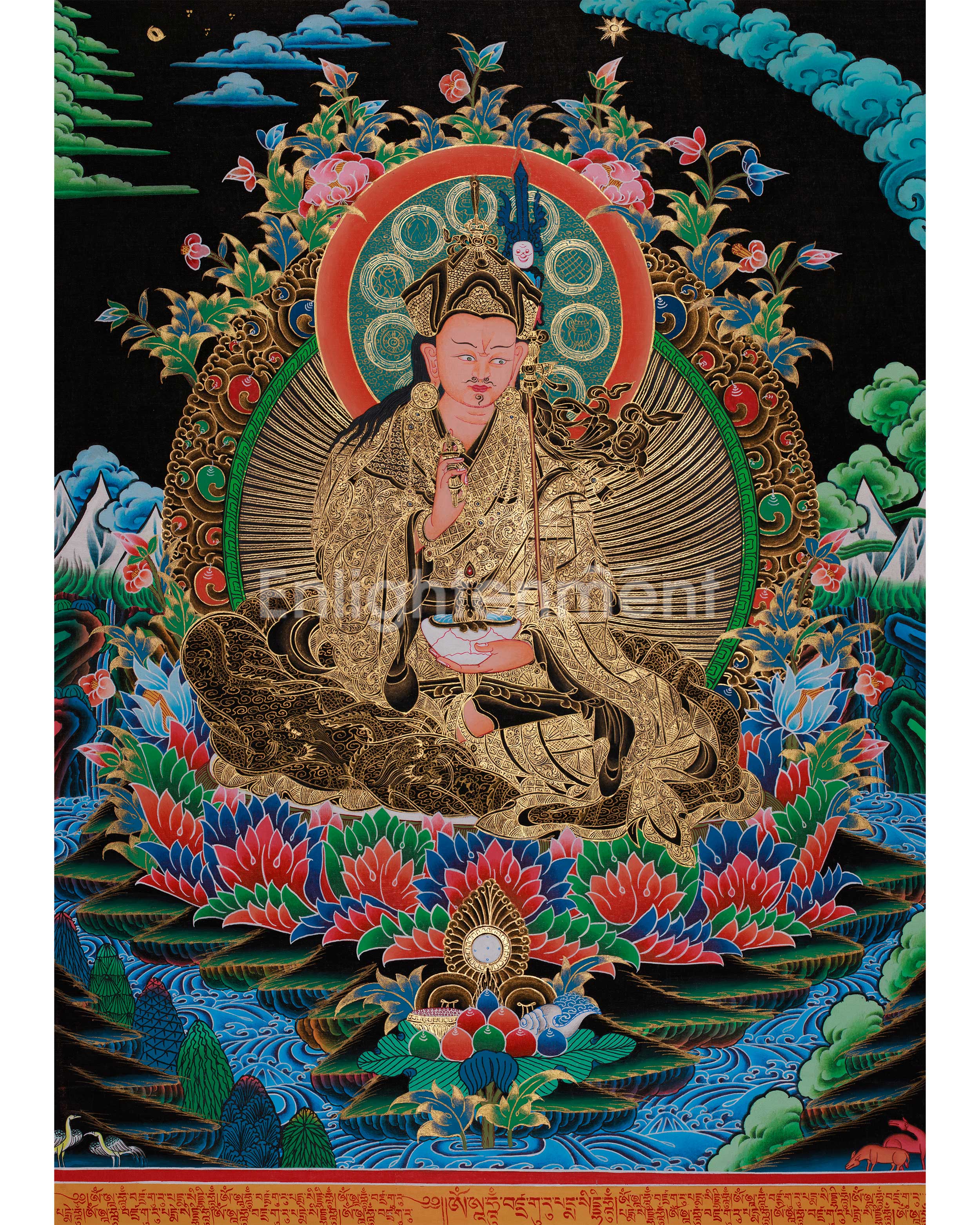Guru Rinpoche Thangka
49 products
Showing 1 - 24 of 49 products
Guru Rinpoche Thangka Collection: The Lotus-Born Master and the Second Buddha
Guru Rinpoche, also known as Padmasambhava in Tibetan, meaning "Lotus-Born," holds a central role in the history of Buddhism, particularly within the Vajrayana school of Tibet. Born miraculously from a lotus in Dhanakosha Lake, Guru Rinpoche's life is interwoven with teachings, miracles, and legends.
Revered as the "Second Buddha," he introduced Buddhism to Tibet in the 8th century. Invited by Tibetan King Trisong Detsen to aid in constructing Samye, the first Buddhist monastery in Tibet, Guru Rinpoche overcame local spirits and deities, transforming them into protectors of the Dharma. In doing so, he harmoniously merged Buddhism with Tibet's traditional spiritual beliefs.
Attributes and Depictions in Thangka
Depictions of Guru Rinpoche often feature a rich array of symbols representing his actions and teachings. Typically portrayed seated, adorned with a lotus headdress and regal attire, these symbols signify his lotus birth and mastery over the realms of Samsara and Nirvana.
His left-hand rests in his lap, holding a skull cup filled with wisdom nectar and a vase of immortality, while his right hand grasps a vajra, symbolizing the unwavering nature of an enlightened mind. Draped over his shoulder is a khatvanga, a staff representing his consort Mandarava and his authority over life and death. His compassionate yet penetrating gaze conveys his boundless love for sentient beings and his ability to see beyond the veils of ignorance.
Where can I buy an original hand-painted Guru Rinpoche Thangka online?
You can purchase authentic, hand-painted Guru Rinpoche Thangkas from Enlightenment Thangka. Our collection features original Tibetan thangka art made on handmade cotton canvas, painted with natural stone colors and 24K gold detailing. We offer FREE Worldwide Shipping and secure checkout for all orders.
Do the thangkas come with silk brocade framing?
Yes, every Guru Rinpoche Thangka can be framed with a traditional silk brocade. This brocade enhances the visual richness of the painting and makes it ready to be mounted directly on your shrine or altar.
Are these Guru Rinpoche thangkas suitable for gifting or offering?
Absolutely. These thangkas are not only sacred visual aids for practitioners but also meaningful gifts for spiritual teachers, Dharma friends, or your own altar space. Many customers also purchase them as offerings to monasteries or temples.
Is this collection suitable for Buddhist practitioners ?
Yes, this is a curated collection for followers of the Vajrayana buddhist tradition, with iconographic accuracy according to terma lineages. We have a variation of Guru Rinpoche thangka including:
1. Guru Padmasambhava
2. Eight Manifestation of Guru
3. Guru Yab Yum
4. 25 Disciples of Guru Rinpoche
5. Guru Rinpoche Rainbow Body
6. Guru Urgen Norla
7. Guru Urgen Menla
Why choose Enlightenment Thangka for your Guru Rinpoche thangka purchase?
-
✅ Hand-painted by master artists trained with years of experience and expertise
-
✅ Made with natural pigments and stone colors, Genuine 24K gold
-
✅ Free global shipping
-
✅ Carefully packed and insured shipment
-
✅ Loved by Dharma practitioners and collectors worldwide
























